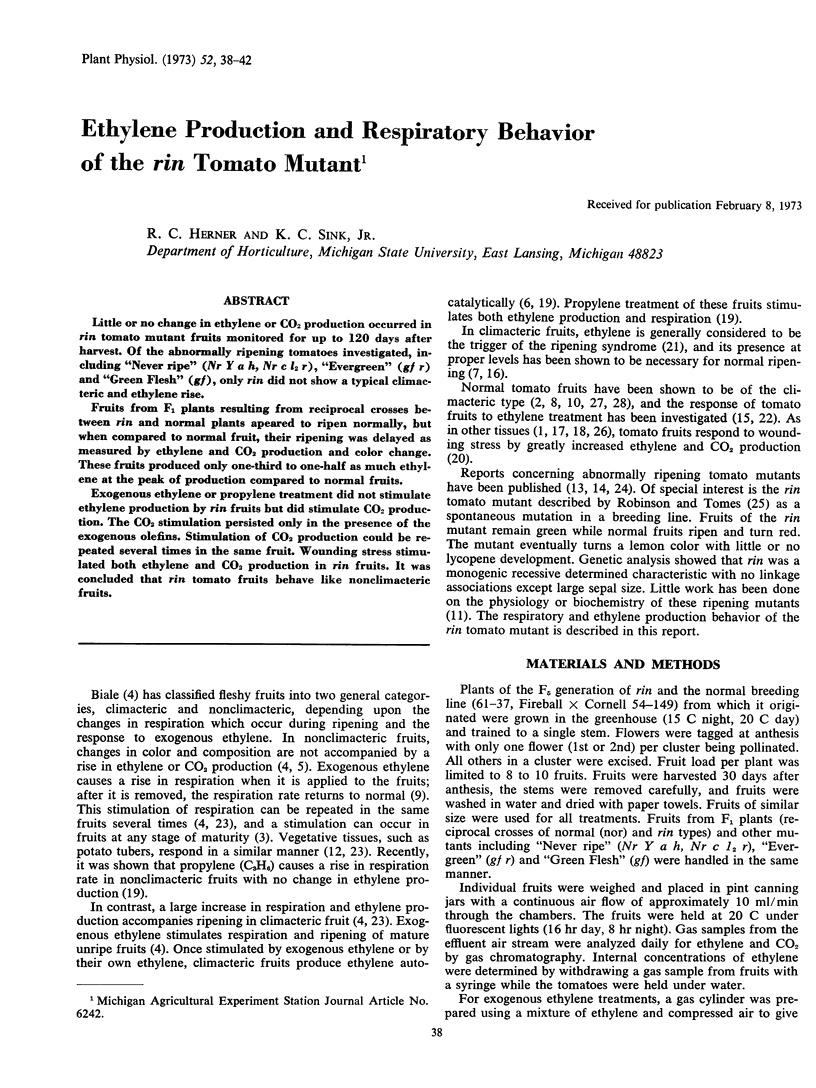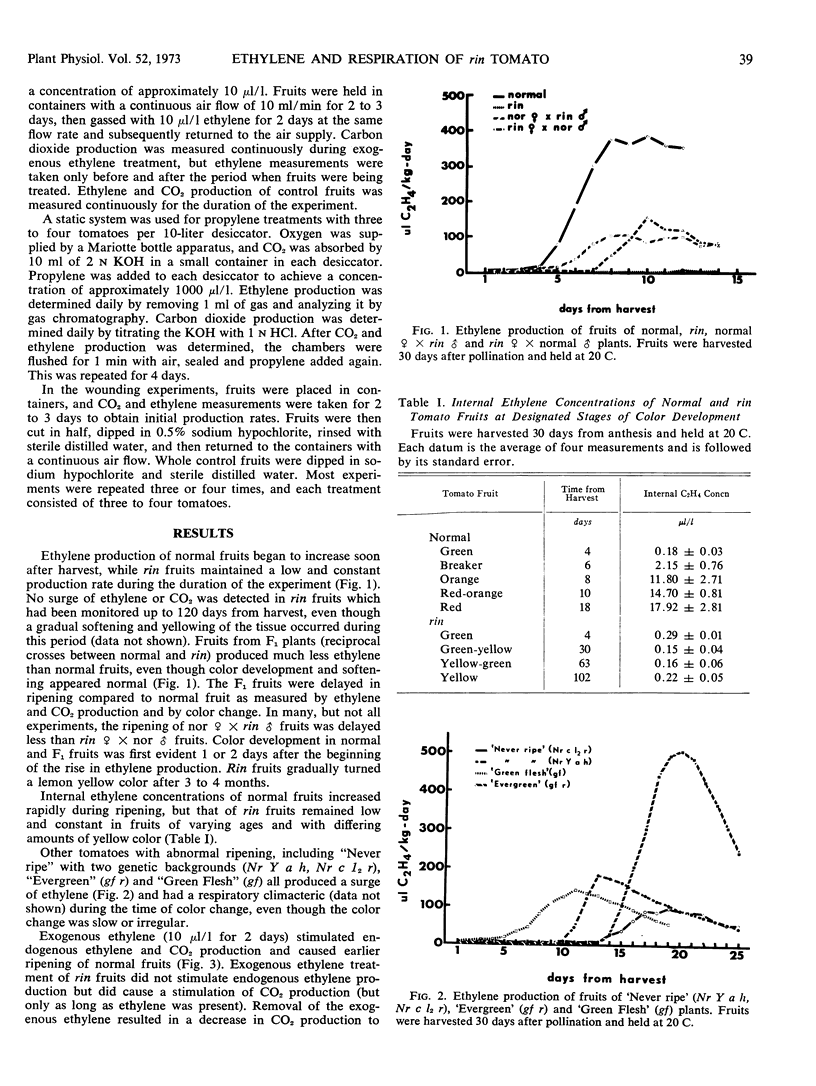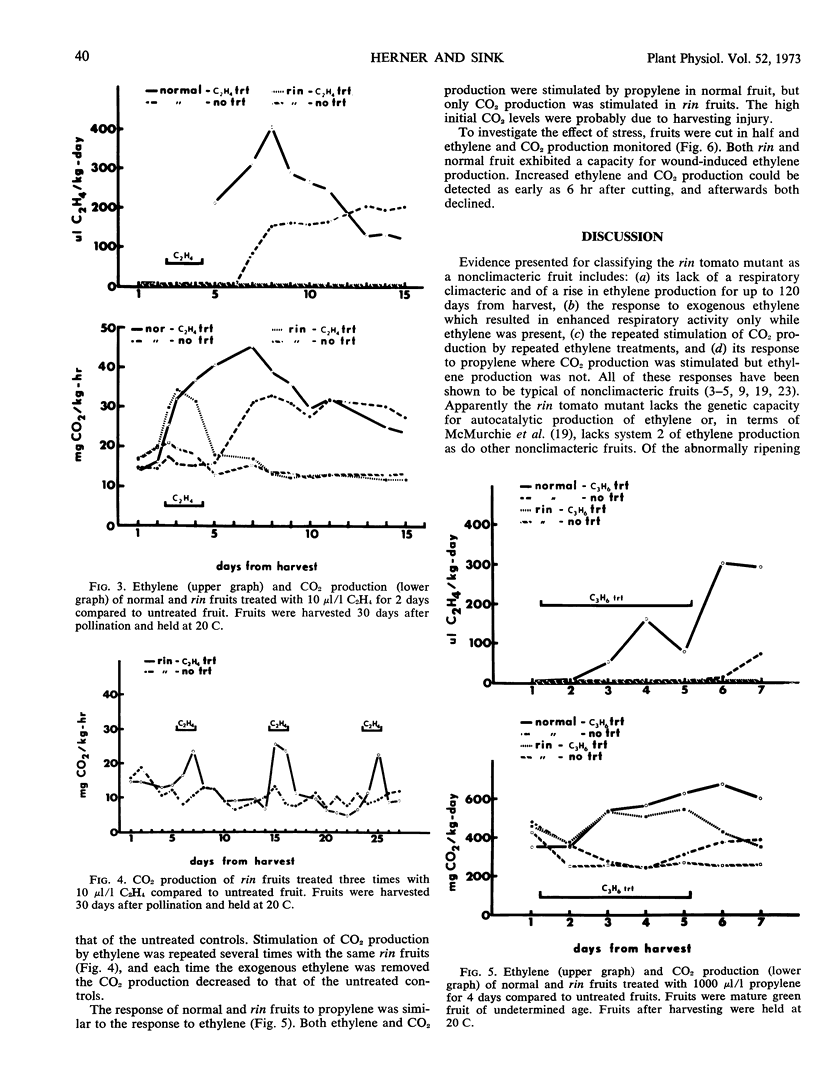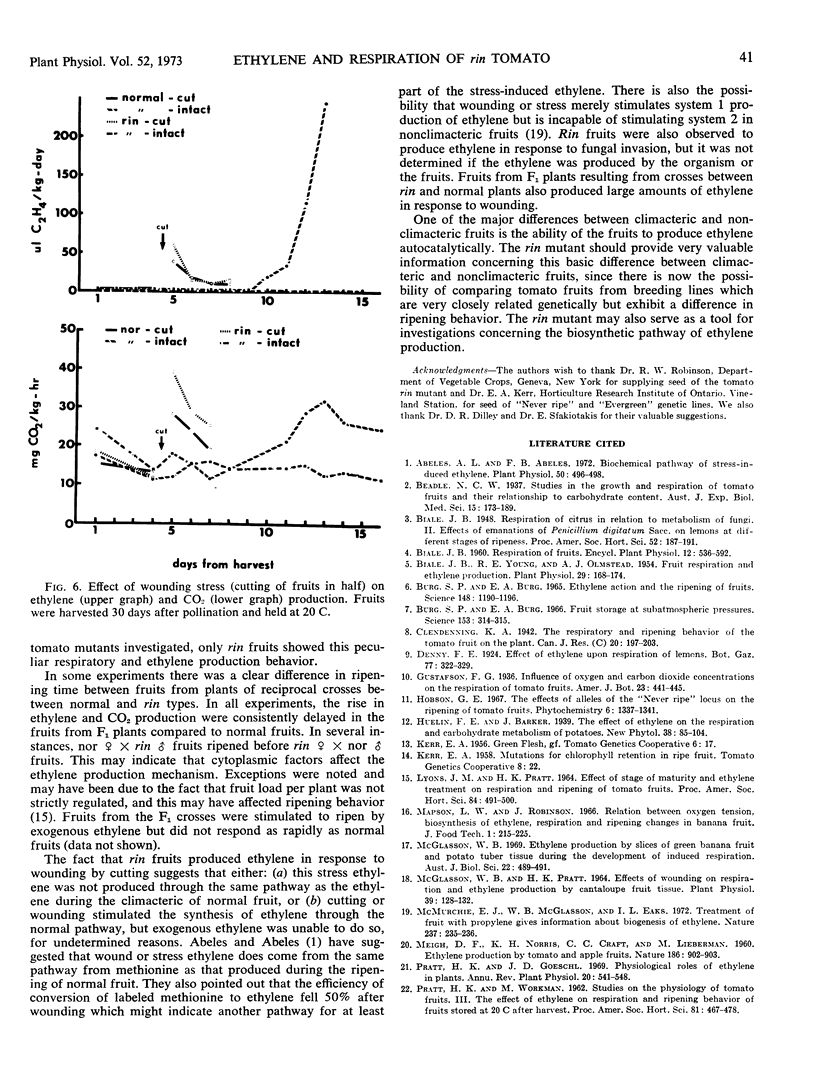Abstract
Little or no change in ethylene or CO2 production occurred in rin tomato mutant fruits monitored for up to 120 days after harvest. Of the abnormally ripening tomatoes investigated, including “Never ripe” (Nr Y a h, Nr c l2 r), “Evergreen” (gf r) and “Green Flesh” (gf), only rin did not show a typical climacteric and ethylene rise.
Fruits from F1 plants resulting from reciprocal crosses between rin and normal plants apeared to ripen normally, but when compared to normal fruit, their ripening was delayed as measured by ethylene and CO2 production and color change. These fruits produced only one-third to one-half as much ethylene at the peak of production compared to normal fruits.
Exogenous ethylene or propylene treatment did not stimulate ethylene production by rin fruits but did stimulate CO2 production. The CO2 stimulation persisted only in the presence of the exogenous olefins. Stimulation of CO2 production could be repeated several times in the same fruit. Wounding stress stimulated both ethylene and CO2 production in rin fruits. It was concluded that rin tomato fruits behave like nonclimacteric fruits.
Full text
PDF




Selected References
These references are in PubMed. This may not be the complete list of references from this article.
- Abeles A. L. Biochemical Pathway of Stress-induced Ethylene. Plant Physiol. 1972 Oct;50(4):496–498. doi: 10.1104/pp.50.4.496. [DOI] [PMC free article] [PubMed] [Google Scholar]
- BURG S. P., BURG E. A. ETHYLENE ACTION AND THE RIPENING OF FRUITS. Science. 1965 May 28;148(3674):1190–1196. doi: 10.1126/science.148.3674.1190. [DOI] [PubMed] [Google Scholar]
- Biale J. B., Young R. E., Olmstead A. J. Fruit Respiration and Ethylene Production. Plant Physiol. 1954 Mar;29(2):168–174. doi: 10.1104/pp.29.2.168. [DOI] [PMC free article] [PubMed] [Google Scholar]
- Burg S. P., Burg E. A. Fruit storage at subatmospheric pressures. Science. 1966 Jul 15;153(3733):314–315. doi: 10.1126/science.153.3733.314. [DOI] [PubMed] [Google Scholar]
- McGlasson W. B., Pratt H. K. Effects of Wounding on Respiration and Ethylene Production by Cantaloupe Fruit Tissue. Plant Physiol. 1964 Jan;39(1):128–132. doi: 10.1104/pp.39.1.128. [DOI] [PMC free article] [PubMed] [Google Scholar]
- McMurchie E. J., McGlasson W. B., Eaks I. L. Treatment of fruit with propylene gives information about the biogenesis of ethylene. Nature. 1972 May 26;237(5352):235–236. doi: 10.1038/237235a0. [DOI] [PubMed] [Google Scholar]
- Reid M. S., Pratt H. K. Effects of ethylene on potato tuber respiration. Plant Physiol. 1972 Feb;49(2):252–255. doi: 10.1104/pp.49.2.252. [DOI] [PMC free article] [PubMed] [Google Scholar]


